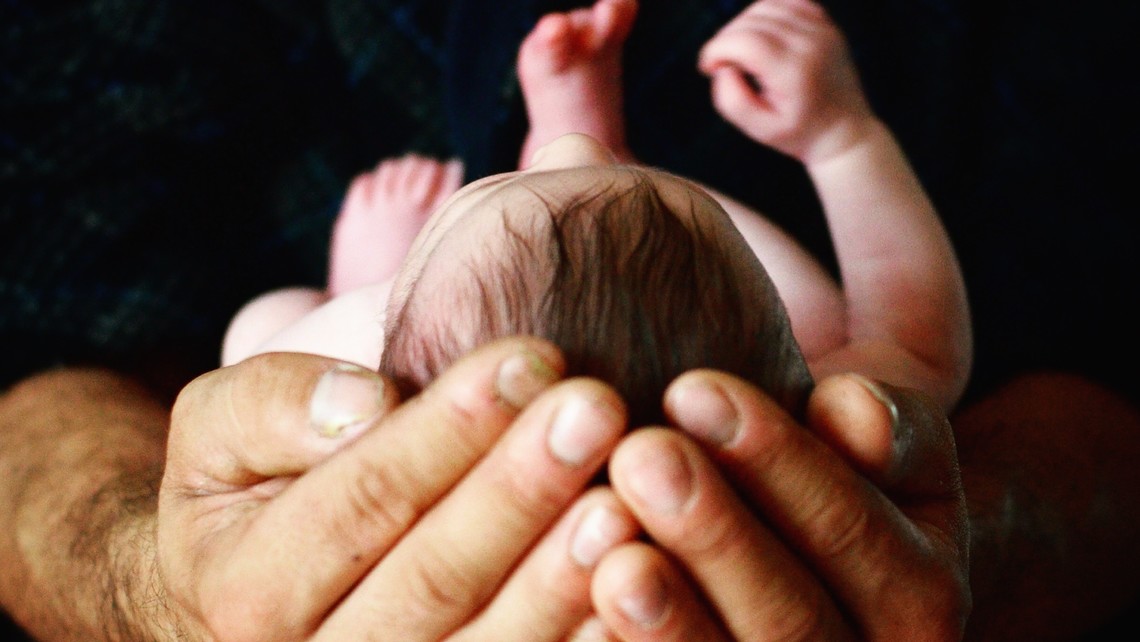
In his marital masterpiece, Love and Responsibility, St. John Paul II describes the love between persons as a mutual relationship, a particular form of love in which elements common to all of its form are embodied in a certain way.[1] The common elements he refers to involve the respect and dignity of the human person, the de-objectification of the person as a mere vehicle for one’s selfish desires and finally and most important, the propagation of the family in Jesus Christ as the nucleus of all society.
A genuine act of love is never veiled or hidden. On the contrary, it becomes a visible beacon that allows a person to experience both an act of joy and acceptance from another. When you apply this formula within a proper sacramental union, the result is a willingness to propagate that love between spouses and in turn usher in the advent of new life due to this love. Hence, the act of love between a husband and wife proposes a desire to share this life with the fruit of their love in children.
Defending the value of a person
The love expressed between a husband and wife is called to mirror the love expressed between God and His children. This act of love serves as a foundation toward recognizing the value of the human person as a gift to be cared for and protected.
In his homily on the dedication of the Holy name of Jesus, St. John Paul II describes the need to defend the value of the person which is expressed in absolute mutual faithfulness until death: the faithfulness of the husband to his wife and of the wife to her husband. The consequences of this affirmation of the value of the person, which is expressed in the mutual relationship between husband and wife, must also be respect for the personal value of the new life, that is, of the child, from the first moment of conception.[2] When the value of the human person is recognized and affirmed, we encounter a communion of person who mutually seek the well being of others and strive to promote and encourage the dignity of the person from conception to natural death. The Catechism of the Catholic Church affirms this position quite clearly:
Being in the image of God the human individual possesses the dignity of a person, who is not just something, but someone. He is capable of self-knowledge, of self-possession, and of freely giving himself and entering into communion with other persons. And he is called by grace to a covenant with his Creator to offer him a response of faith and love that no other creature can give in his stead.[3]
In Jesus Christ, the Son of God we encounter God’s never-ending love for us when he offered His only-begotten son in sacrifice to free us from the slavery of sin and death. It is in Jesus Christ the Son of God where we are called to participate in His work in creation and salvation for all humanity.[4] Something we may not realize is that Christ restores our identity with God. He strengthens and restores the image of God in us. Restoration of our divine image is a resuscitation of our value as human beings. It allows us to put on Christ and proclaim His Kingdom.
The Kerygma of Life
Every human life deserves to receive the kerygma of life. St. Paul reminds us that there is always an opportunity to proclaim the kerygma. While he is standing in the middle of the Areopagus, he proclaims the following:
Men of Athens, I perceive that in every way you are very religious. For as I passed along, and observed the objects of your worship, I found also an altar with this inscription, to an unknown God. What therefore you worship as unknown, this I proclaim to you. The God who made the world and everything in it, being Lord of heaven and earth, does not live in shrines made by man, nor is he served by human hands, as though he needed anything since he himself gives to all men life and breath and everything.[5]
St. Paul’s actions at the Areopagus serves as a model for anyone who desires to proclaim the Gospel of Life amidst a disregard for the sanctity of life. By virtue of our baptism, we are naturally endowed by to proclaim the sanctity life before anything. Any activism related to our prolife initiatives must first be driven by a clear and demonstrative proclamation of the Kerygma and our place within God’s plan for our salvation. Second, the kerygma is the gateway to Jesus Christ because it is His very Word that we proclaim and the intent is to guide someone to identify with Christ through a process of openness, trust, and eventually a gradual conversion toward Him.
As we prepare this week for the March for Life let us first proclaim the love of Jesus Christ and the sanctity of His birth. May our desire to defend life be driven by Jesus first and foremost before our own personal conviction.
And we have seen and testify that the Father has sent his Son as the Savior of the world. Whoever confesses that Jesus is the Son of God, God abides in him, and he in God. So, we know and believe the love God has for us. God is love, and he who abides in love abides in God, and God abides in him.[6]
[1] St. John Paull I, Love and Responsibility, (San Francisco, Ignatius, 1993), p. 73
[2] St. John Paul II, Homily for the final celebration to the Most Holy Name of Jesus, Dec 31, 1978
[3] Catechism of the Catholic Church, 357
[4] Catechism of the Catholic Church, 373
[5] Acts 17:22-25
[6] 1 Jn 4:14-15






